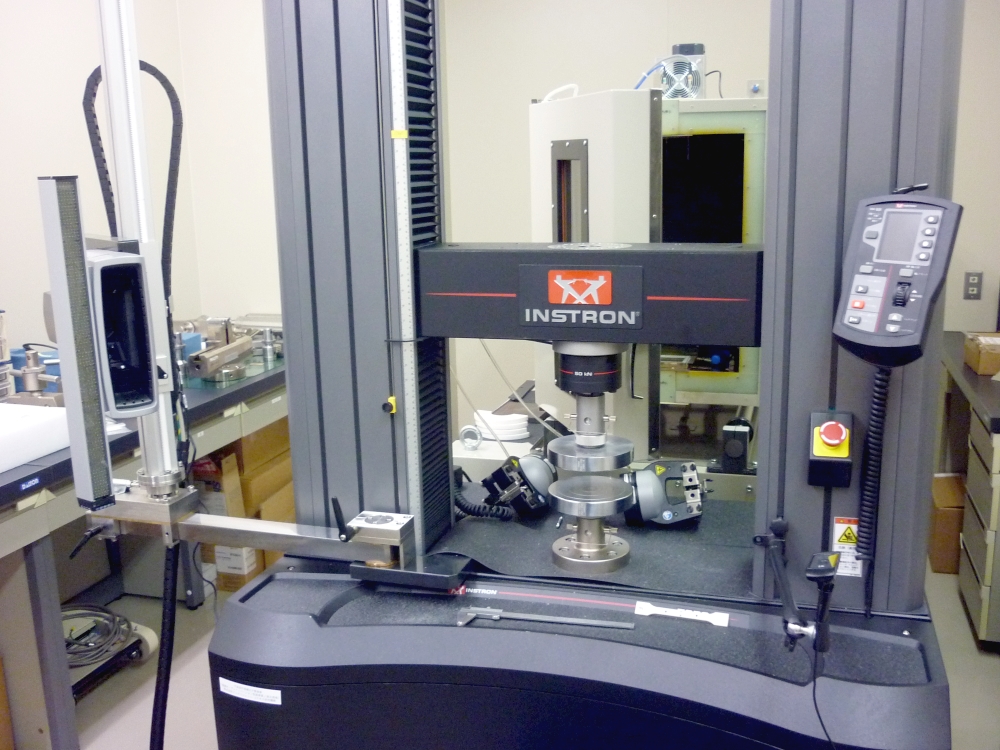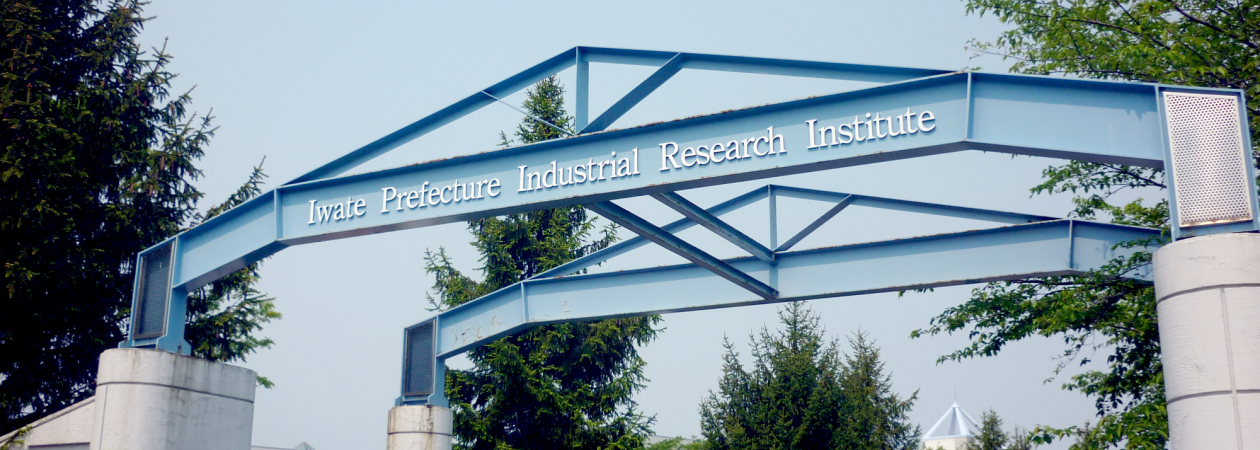“The joy of making and contributing to the region, together with Iwate businesses.” That is the motto of the Iwate Industrial Research Institute(IIRI), an independent administrative agency that researches manufacturing technology for companies in the prefecture. The IIRI also offers consulting services, experiments by request, worker skills development, and rental of 3D printers and other advanced equipment. It is also a player in Iwate’s plan for the ILC: the IIRI is using its research to help local companies get involved with the construction of the facility.
Distinctly Iwate
The IIRI has been around since the Meiji Period of Japan, as it was founded in 1873 as “Kangyojo,” (lit. “A place to encourage industry”). Ever since that time, the IIRI has encouraged the use of the most advanced technology available at the time to Iwate companies and organizations, and the precise techniques of the time of its founding can be seen even today in Iwate’s traditional craft culture. The IIRI has been a place that has supported artisans who need precise techniques for cast-ironware, woodworking, lacquerware and more. Iwate as a whole also has a thriving primary industry, and the IIRI’s research has helped local companies make Iwate’s bountiful agricultural products into a variety of goods.
The IIRI’s research is divided into two, and they support the research and information sharing associated with them:
MANUFACTURING TECHNOLOGY RESEARCH
Electronics, software, IT, surface finishing of industrial materials, paint application, joining materials together, plastic processing, metallic casting, machine processing, precision measurement, chemical analysis
And
TECHNOLOGY FOR LOCAL INDUSTRY
Design, lacquer, crafts, wood-working, sake, other brewed edible products, food with health-promoting benefits, fermented food, processed food, and using research results in product development
Here are six interesting projects the IIRI has dedicated resources towards (and of course, there are many more than listed here!):
R&D for the Yui-no-ka rice cultivar
Working with local sake associations, farmers, the Iwate Agricultural Center, and other related parties, the IIRI led an initiative to develop a new rice cultivar specifically for making sake, called “Yui-no-ka.” Around 20 sake breweries in the prefecture have each made a Yui-no-ka sake using this rice, and people like to sample each company’s unique spin on the sake.
Universal design for Iwate’s cast-iron products
Iwate is known throughout Japan for its cast-iron products, as the area has been a home to these artisans for over 400 years. Most famous are their iron kettles – these valuable items have distinctive designs etched onto jet-black iron surfaces. But consumption is down and the industry needed an injection of some new design ideas and philosophies. Enter Universal Design. The IIRI worked with industry officials to introduce the ideas of UD and make these kettles easier to use. They adjusted the spouts for easy-pouring and a lowered chance of boiling over, and flattened the handles for a no-slip grip. These products won the Good Design Award in 2005.
Developed and patented a new Zogan technique
A woodchip company came to the IIRI to see if there was a way to add value to small-diameter tree products, so they performed joint research to develop and patent a new zogan technique for use with leftover log-ends. Zogan is an old Japanese technique for inlaying designs in metal or wood, and this particular technique is used to create intricate designs into dried woodchips. The IIRI previously made contracts with companies so they could use the patent to develop key-holders, stamps, medallions, and other knick-knacks (the patent is now expired).
Anechoic chamber
Iwate companies use this sealed chamber and its electromagnetic compatibility equipment to evaluate effects of electromagnetic waves emitted from electronic devices. In 2015, IIRI registered with VCCI (Voluntary Control Council for Interference by Information Technology Equipment), a Japanese association created to cope with radio disturbance problems caused by personal computers, facsimile equipment and the like. Now it is possible to use the data recorded with IIRI’s EMC equipment and send it to VCCI for integration and confirmation from within Iwate. This will improve quality assurance and product development for manufacturing companies in Iwate.
3D Scanning and Printing
Coordinate measurement systems used in non-contact 3D scanners are used to measure the dimensions and geometry of free-form objects at an extremely precise level. In layman’s terms, the technology used in 3D scanners can now accurately scan in objects with complicated shapes, and the IIRI owns a scanner with these capabilities. We can now see the potential of combining 3D scanners and printers to create highly efficient and precise manufacturing methods, and expectations are high for a paradigm shift in manufacturing technology. The IIRI is using its 3D scanner and 3D printer to participate in joint research with the National Institute of Advanced Industrial Science and Technology to create a closed loop method of manufacturing.
Radiation measurement
Following the 2011 Tohoku disaster, many were worried about the effects of the Fukushima nuclear accident on the agricultural output of Iwate. To ease fears and report findings, the IIRI installed a Germanium semiconductor radiation detector and survey meter to be used by companies to prove there is no contamination in manufactured products, parts, processed goods, and raw materials. In this way, the IIRI is contributing to halting the spread of rumors regarding Iwate products.
RESEARCH AND DEVELOPMENT FOR THE ILC
Officials envision a Silicon Valley in Iwate where businesses accumulate in the area surrounding the ILC and compete to develop the best technology. However, it’s hard for local companies to get involved as they don’t normally have the chance to develop precision techniques that will be used to construct the ILC. The IIRI will play a central role in supporting companies within Iwate that can contribute to the project. One area in particular that they are supporting research in is electropolishing.

A SCRF cavity on loan from KEK. Their interior surfaces must be smoothed to perfection using electropolishing. (SCRF: Super-conducting radio frequency, a technology used in accelerators)
The technique immerses metal into an electrolyte solution and then subjects it to a direct electrical current, which then removes imperfections and leaves the surface completely smooth, like a mirror. Electropolishing would be needed to make the superconducting niobium cavities required for the ILC accelerator, as you need an absolutely perfect surface inside to accelerate sub-atomic particles. But electropolishing thus far has been an expensive and lengthy process.
The IIRI has been researching technology that would be needed for the mass production of the SCRF cavities, and has focused on electropolishing technologies as an area where local companies could contribute. This year they are exploring inexpensive plastic resins that could be implemented in the electropolishing device instead of the costly Teflon currently used. Researchers run tests to evaluate the endurance of the material after being immersed in the electropolishing fluid.

The Stretch Machine – INSTRON 5982
Before and after immersion, the material is run through stretch tests with the machine shown above. The IIRI has succeeded in observing the procession of distortions to the material with Digital Image Correlation.
The IIRI is also supporting two local companies, Higashi Nihon Kiden Kaihatsu and WING, which are working with Marui Galvanizing (a company from Hyogo with a factory in Tohoku), to develop a way to electropolish the SCRF cavities standing vertically, rather than laying them horizontally. They believe that this way would greatly reduce both costs and labor hours, which would be very useful when mass-producing these cavities.
OPEN TO THE PUBLIC
Every year in October, the IIRI opens its doors to the public so that they can learn more about its activities. In recent years they’ve held lectures on the ILC helmed by researchers from KEK. There are also exhibits of Iwate products that use IIRI’s technology and equipment, and workshops where people can see robots and other devices in action. This year’s event is on October 15, 2016 (Saturday).
We’ve reported on the technical research done at the Iwate Industrial Research Institute, but there’s another organization next to the building that works on the softer side of developing businesses in Iwate. Next time we’ll bring you an article about the Iwate Industry Promotion Center and what they’re doing to get local businesses ready for the ILC!
Japanese
岩手県工業技術センターの紹介~地域産業やILCの研究開発を支援~
和山アマンダ[岩手県]
地方独立行政法人岩手県工業技術センターは、「創るよろこび・地域貢献」と「企業の皆様と一緒に」を基本姿勢として、ものづくり技術の研究を通じて県内企業を支援しています。技術相談、依頼試験、人材育成、3Dプリンタ等の機器の貸出などのサービスも提供しています。また、ILCの技術研究開発を行い、ILC建設の参入へ向けた地元企業の活動を支援しています。
岩手ならではの研究開発
岩手県工業技術センターは明治時代の1873年に「勧業場」として創立されました。昔から岩手は伝統工芸品で知られており、当センターは地域産業の技術研究により、高精度な技術を必要とする鋳造、木工細工、漆器等に関わる職人を支援しています。また、盛んな第一次産業の中で、県内企業が研究成果を活用し、農産物を様々な商品に加工しています。
さらに、新たな企業活動を促進するため、当センターの研究を大きく2つに分けられます:
ものづくり技術
電子、ソフトウェア、情報通信、工業材料の表面処理、塗装、接合、プラスチック加工、鋳造、機械加工、精密測定、化学分析等
地域産業技術
デザイン、漆、木材加工技術、酒造、醸造関連食品、機能性食品、発酵食品、食品加工等
ここから、当センターの興味深い取組を6つ紹介します。(もちろん、これよりたくさんあります!)
『結の香』新品種の酒米の研究開発
当センターを中心に、県内の酒造組合、農家、農業研究センターとその関係者らで、新品種の酒米『結の香』の開発に取り組みました。県内酒蔵の約20社が結の香を使用し、それぞれ各社の『結の香』というお酒を出しています。皆さん、様々な『結の香』の試飲を楽しんでいます。
ユニバーサルデザイン鉄瓶の開発
岩手は「南部鉄器」の伝統工芸品で全国的に知られており、400年もの歴史があります。その重厚かつ繊細な造形と鋳鉄独特の素材の魅力から価値のある伝統工芸品ですが、近年は、消費の低迷などが続いており、新しいデザインのアイディアや考え方が必要です。そのひとつは、ユニバーサルデザインです。当センターはユニバーサルデザインの理念や使いやすさの考え方を工芸品に取り入れるため、製造業者と協力しました。注ぎやすさを追求し、注ぎ口や片手弦などを調節し、2005年にグッドデザイン賞を受賞しました。
新しい象嵌(ぞうがん)技術の開発・特許
小径木等の付加価値向上のため、木材チップ製造業から技術相談を受け、官民共同研究推進事業で従来あまり利用されていなかった木口面を活用する新しい象嵌(ぞうがん)装飾体の製造法を開発し、特許を取得しました。象嵌(ぞうがん)とは、日本の工芸技法のひとつであり、一つの素材に異質の素材を嵌め込むと言う意味で金工象嵌(ぞうがん)、木工象嵌(ぞうがん)等があります。新技術では、乾燥済の木材チップに複雑なデザインをつくる技術を開発しました。当センターでは、特許「象嵌(ぞうがん)装飾体の製造法」の活用のため、企業と許諾実施契約を締結しました(当該特許は既に特許権の存続期間を満了しました)。これにより、企業はキーホルダー、スタンプ、メダル等の開発の際に、この特許を使用しました。
電波暗室
当センターでは、電子機器から発せられる電磁波による影響を評価するためEMC(電磁両立性)試験設備を運用し県内の企業にご利用いただいています。2015年に、当センターは一般社団法人VCCI協会へ入会し、試験設備の登録を行いました。これにより、当センターのEMC試験設備で測定したデータを用いてVCCIへの適合確認届出が可能となりました。VCCI適合確認測定が県内で可能となり、県内の電子機器関連企業の製品開発、品質確認の効率化に大きく寄与できると考えています。
3Dスキャナと3Dプリンタ
非接触式3Dスキャナを使用した座標測定方法は、自由曲面に対する特殊な測定として高精度な寸法測定や幾何形状測定に使用されつつあります。さらに、3Dスキャナと3Dプリンタの組み合わせにより高能率かつ高精度な製品製造に対応できる可能性も見えており、製造技術のパラダイムシフトへの期待が高まっています。当センターでは3Dスキャナ、3Dプリンタを使用して、国立研究開発法人産業技術総合研究所が主催する共同研究に参加し、クローズドループ製造方法の構築に取り組んでいます。
放射能濃度測定による風評被害対策
2011年に発生した東日本大震災津波に続いて起きた福島第一原子力発電所事故後に、放射能濃度測定のゲルマニウム半導体検出器と表面汚染を計るサーベイメーターを導入し、県内の農産物食品をはじめ、製造業者が生産する製品・部品・加工品・その原材料等に放射能汚染が無いことを証明し、県内生産品の風評被害対策を実施しています。
ILC製造技術開発支援
私たちは、ILCの周辺地域で産業集積や技術開発が進む「岩手でのシリコンバレー」の形成を思い描いています。しかし、県内の企業にとってILC建設への参入は難しいです。県内企業は通常、ILC建設で必要となる高精度の技術を開発する機会がありません。当センターは、県内企業がILCに参入できるよう企業支援において中心的な役割を果たします。その一つの分野として「電解研磨(メッキ)」を支援しています。
KEKから借用中の超伝導加速空洞。電解研磨により内面を鏡面状態にします。
電解研磨とは、金属を電解液に浸漬し、直接電流を流すことで金属表面の凹凸を溶かし、鏡面状態にします。電解研磨はILCの中核を構成するニオブ製超伝導加速器空洞の電子の加速性能を上げるために必要ですが、従来の方法ではコストが高いです。
現在、当センターでは超伝導加速空洞の量産化に必要な技術開発として、県内企業が取り組む電解研磨装置の開発をはじめ、県内企業の加速器産業への進出支援を行っています。今年は、現在使われている高価なテフロン材に代わって、電解研磨の装置に実装可能な安価な樹脂材料を探索しています。研究者らは、樹脂材料の電解研磨液に対する浸漬耐久性評価を実施しています。
引張試験機– INSTRON 5982
浸漬前後の樹脂材料について、上記の引張試験機による2Dデジタル画像相関法によりひずみ量の推移を観察したところ、表面劣化の進行の様子を視覚的に捉えることに成功しました。
これにより、当センターは、マルイ鍍金工業㈱とともに、東日本機電開発㈱と㈱WINGが取り組む縦型電解研磨装置の開発を支援しています。従来の横型の装置と比べ、コストと作業時間の大幅な削減が見込まれ、加速空洞の量産化へ貢献することが期待されます。
一般公開
毎年10月、当センターでは、地域の方々に広く活動を知ってもらうため、一般公開のイベントを開催しています。最近では、KEKの研究者によるILC教室も開催しています。また、当センターの研究を用いた商品の展示、ロボットや他の装置の実演などがあります。
今年の一般公開は、 10月15日(土)の予定です。
以上、岩手県工業技術センターの技術研究開発の紹介でした。実は、その隣の建物に産業振興に取り組んでいるもう一つの団体があります。次回は、いわて産業振興センターのILC実現に向けた取組を紹介します!





